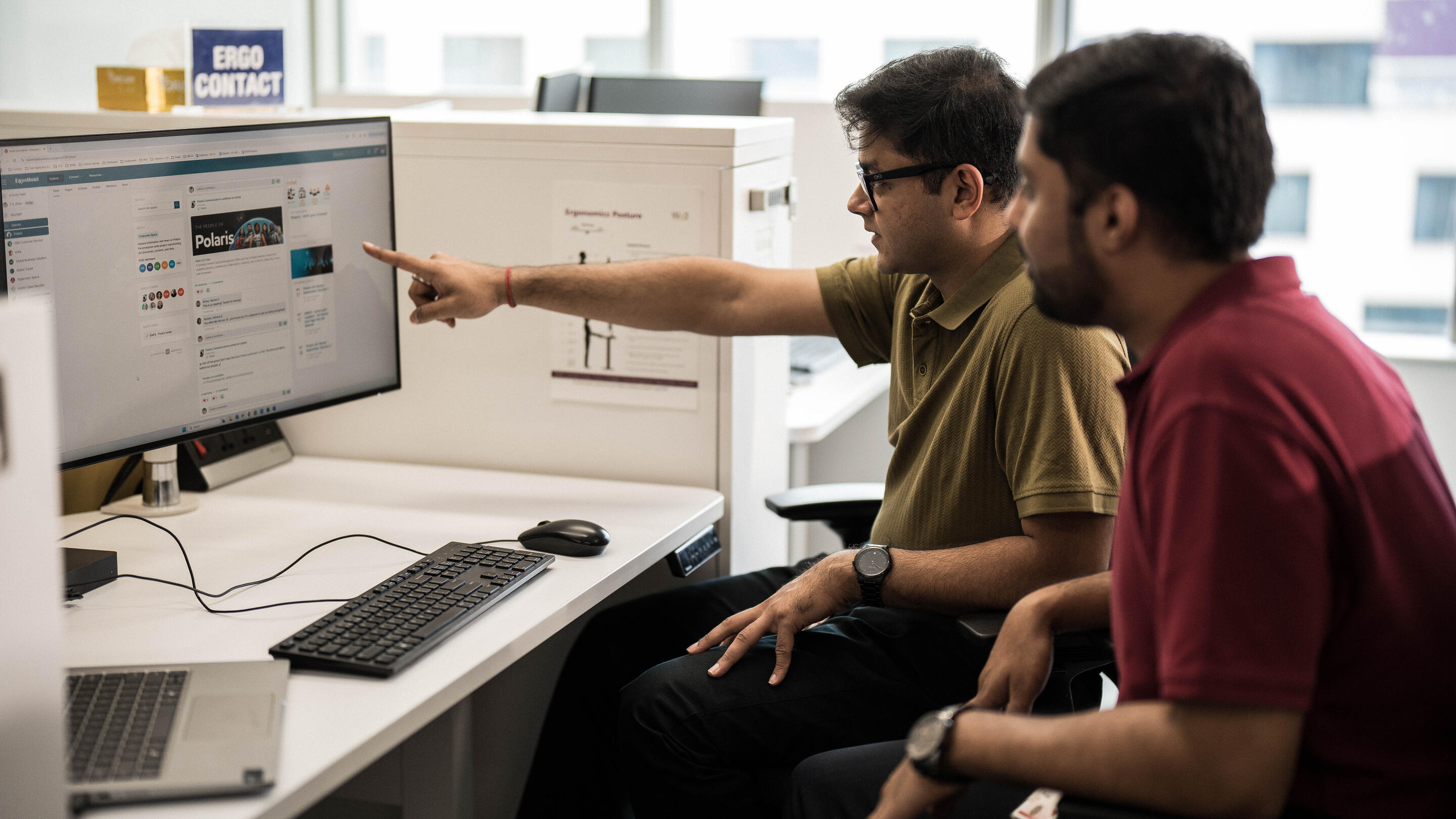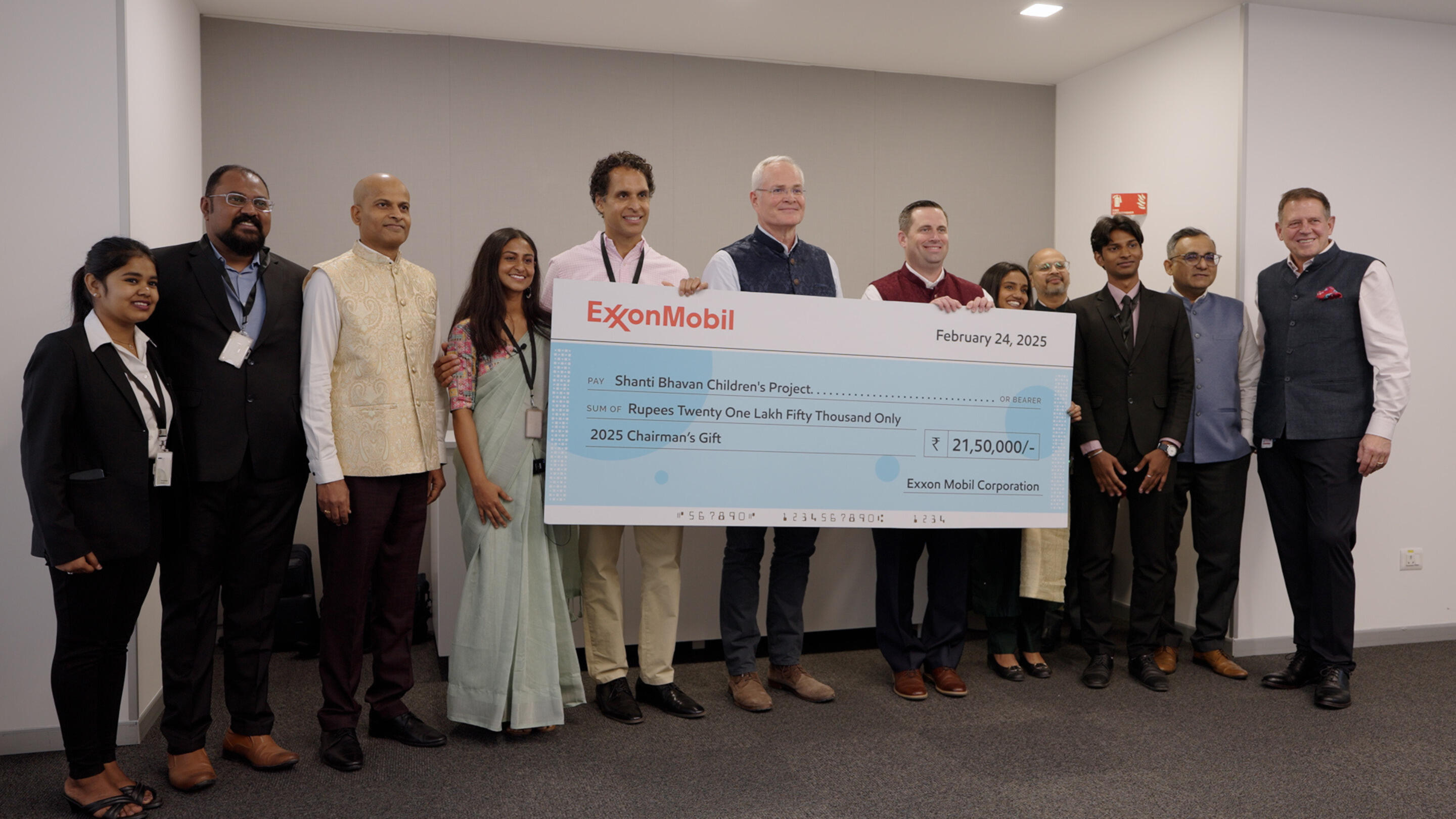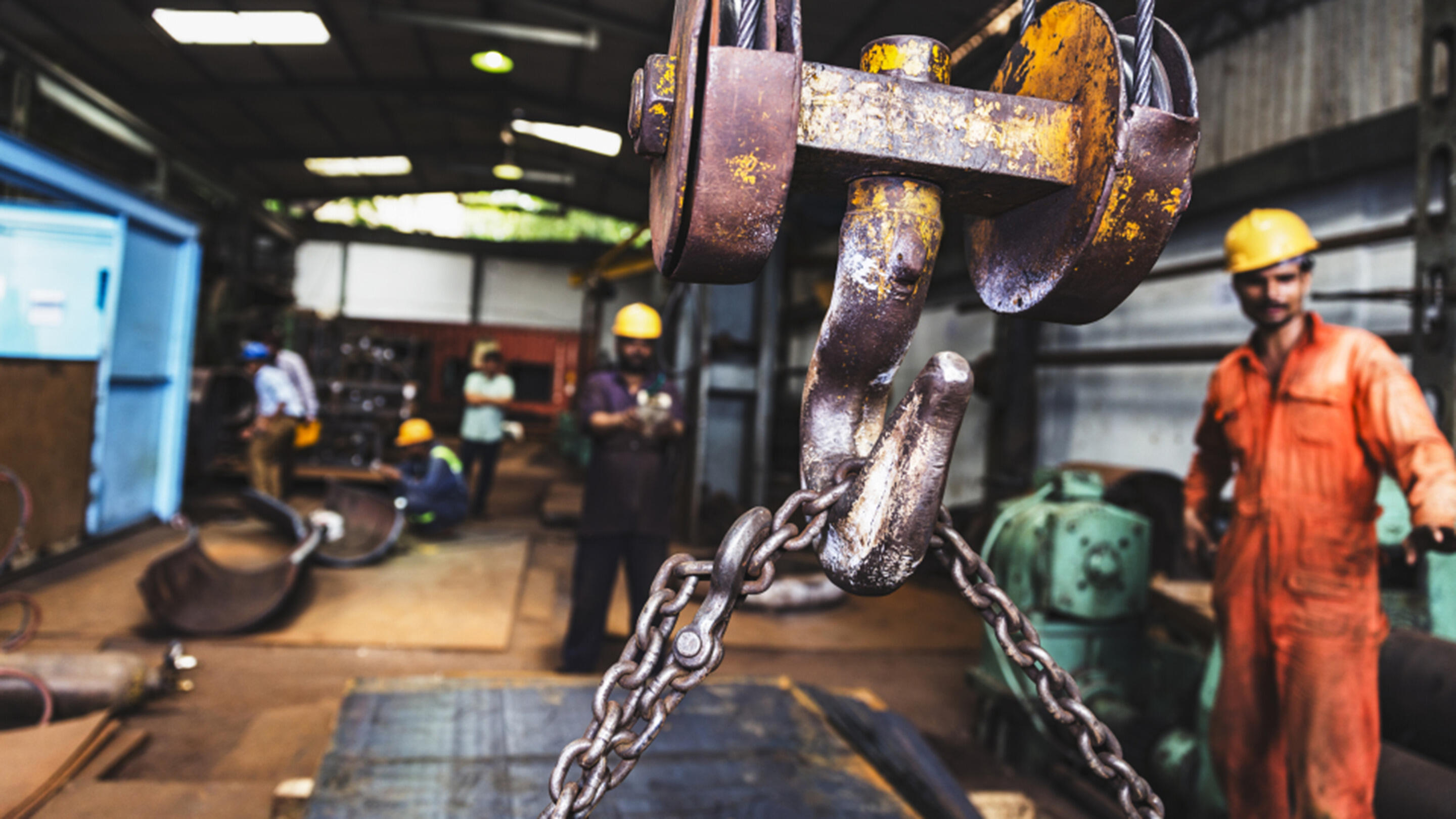3 min read
• Aug. 6, 2024Meet the people making hydrogen and ammonia happen
- Hydrogen is expected to meet 10% of global energy needs by 2050.
- Water vapor is the only byproduct of using hydrogen as fuel or feedstock.
- Hydrogen can be transformed into ammonia, a low-carbon fuel for heavy industry and key ingredient in fertilizers.
3 min read
• Aug. 6, 2024The world can accelerate a lower-carbon future by cutting CO2 from some of the highest-emitting sectors. Discover how low-carbon solutions like hydrogen and ammonia can step up to do some of this heavy lifting.
Hydrogen is emerging as one of the most affordable way to significantly reduce emissions in manufacturing, power, and transportation. Ammonia—a critical ingredient in fertilizers—could be a low-carbon way to transport hydrogen over large distances. It can even be used as a fuel for key sectors such as marine transportation.
Engineers at our Bengaluru campus are working to develop hydrogen and ammonia and explore where they can have the greatest impact.
How this energy works
Let’s look at hydrogen first.
Whether used as a fuel or feedstock, hydrogen can generate energy without producing any greenhouse gas emissions when used. In fact, the only byproduct is water vapour.
But even though hydrogen is the most abundant element there is, accounting for around 75% of the mass of the known universe, it doesn’t often exist in a pure state in nature. This means it needs to be produced or extracted.
There are a number of ways to create it. One is to make it from natural gas in combination with carbon capture and storage (CCS). This helps to safely capture and store underground over 98% of the CO2 produced during the process. The hydrogen thus generated is typically known as “blue hydrogen.”
Meet Siddharth Ramesh from our Bengaluru campus, who is helping to develop blue hydrogen.
From hydrogen to ammonia
Despite its potential, hydrogen is complicated to transport and store, as it takes up a lot of space. Compressing or turning the fuel into liquid is not efficient and affordable. This is where ammonia can help.
Listen to how Faisal Siddique from our Bengaluru Campus is helping to make ammonia a stronger future fuel.
ExxonMobil currently produces 1.3 million metric tons of hydrogen globally and plans to produce more than one million metric tons of ammonia annually.
With decades of experience in hydrogen, ammonia, and the CCS technology that helps make these fuels net-zero, the company is planning to invest more than $20 billion in initiatives to lower greenhouse gas emissions between 2022 and 2027.
As CCS deployment around the world grows, the cost of producing low-carbon fuels could go down, bolstering hydrogen and ammonia’s role in a lower-carbon future.
Exxonmobil India
Newsroom
Stay up to date with the latest news and information.
Explore more

Our People and AI: Making the magic happen
2 min read
• Jan. 13, 2026
Taking Indian talent to the world stage
2 min read
• Dec. 8, 2025
Pragmatic and empowering: The force behind India’s energy story
2 min read
• Nov. 18, 2025
A to B: Turning Artificial Intelligence into Business Intelligence
3 min read
• Oct. 23, 2025
Changing lives with the power of education
5 min read
• Sept. 12, 2025
Viksit Bharat: LNG can be part of that
3 min read
• Aug. 21, 2025